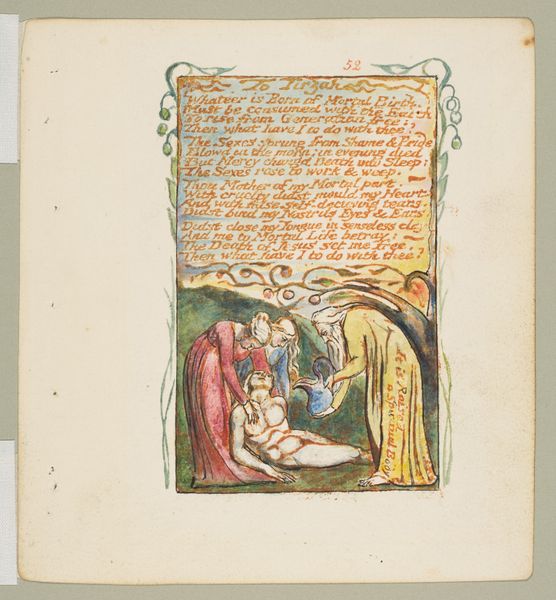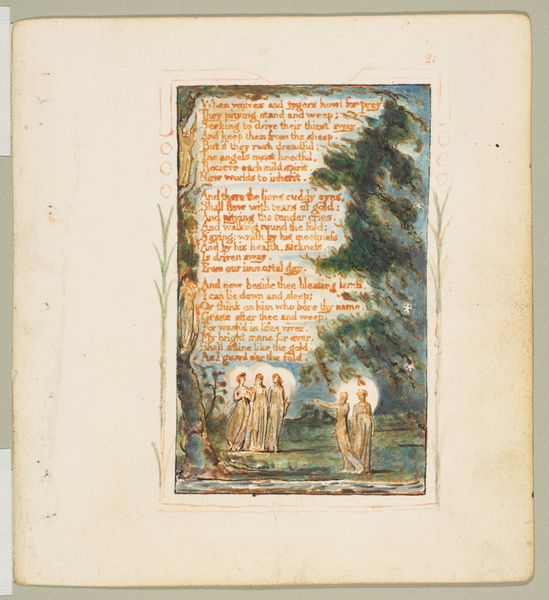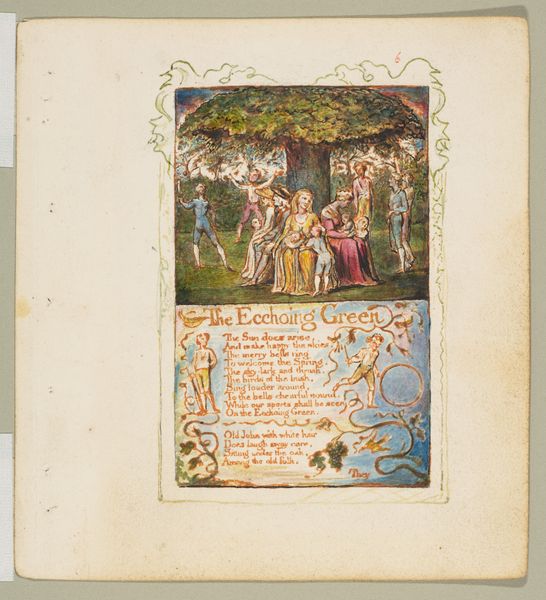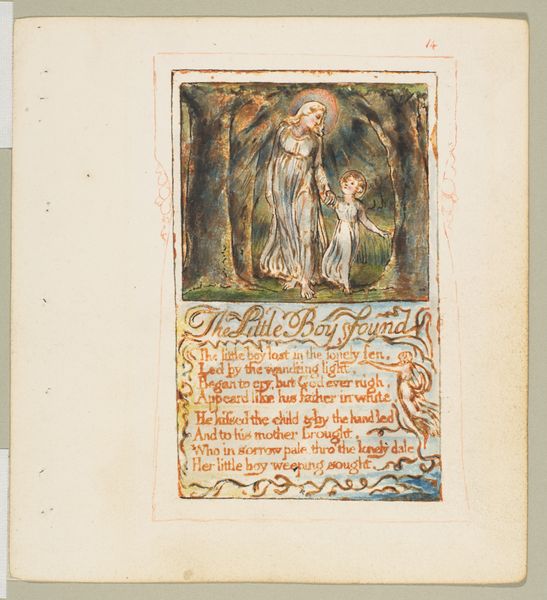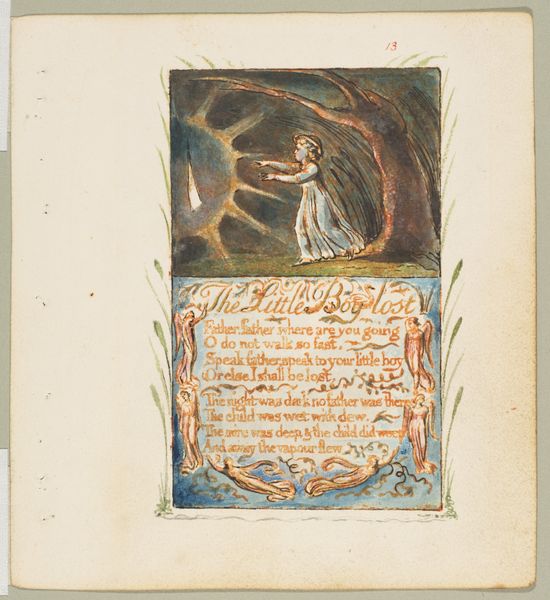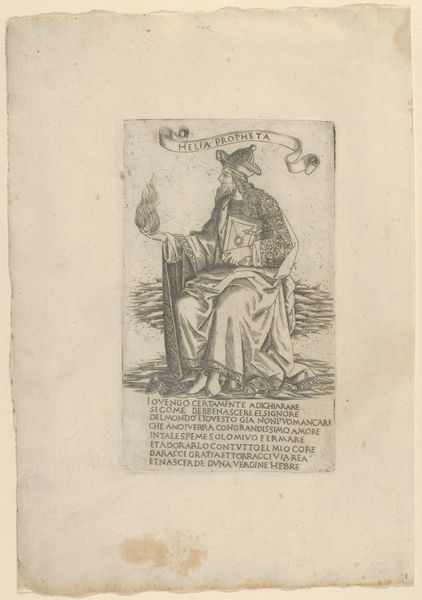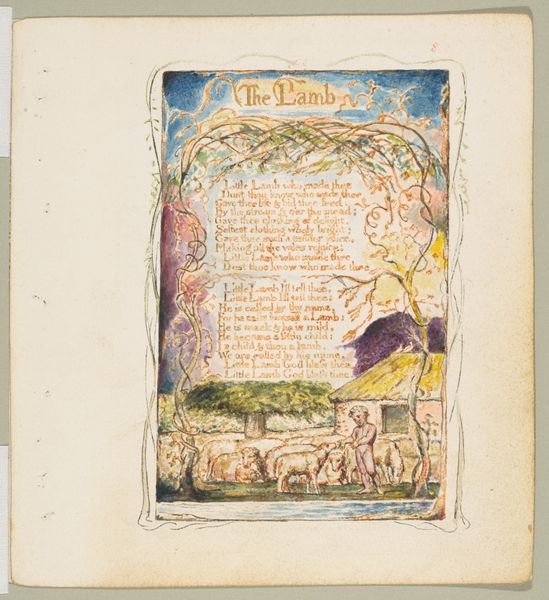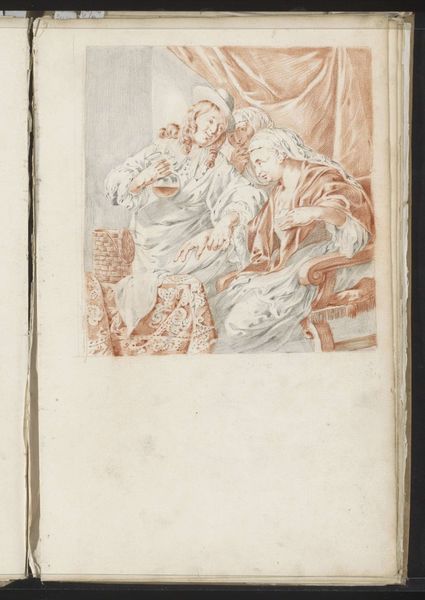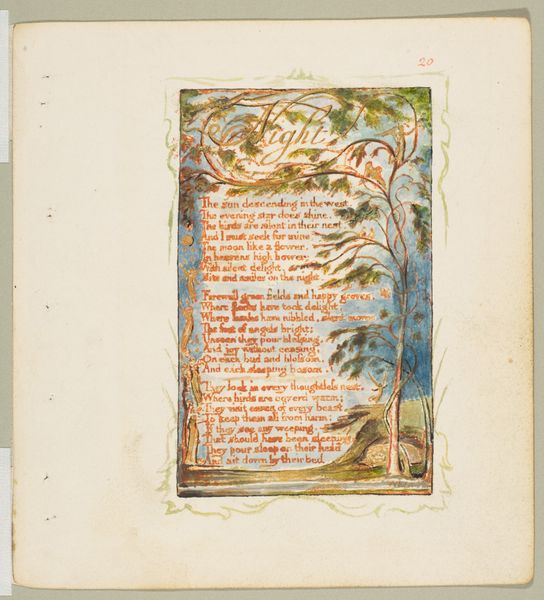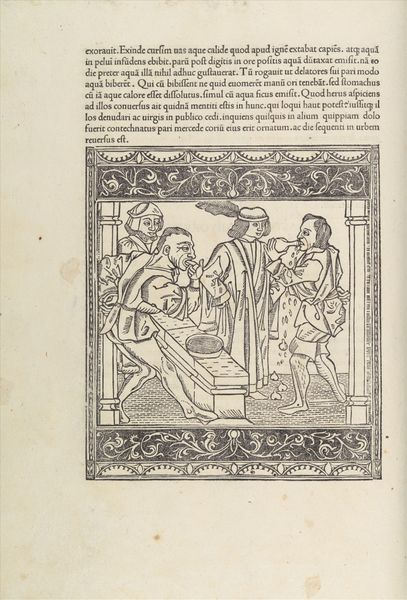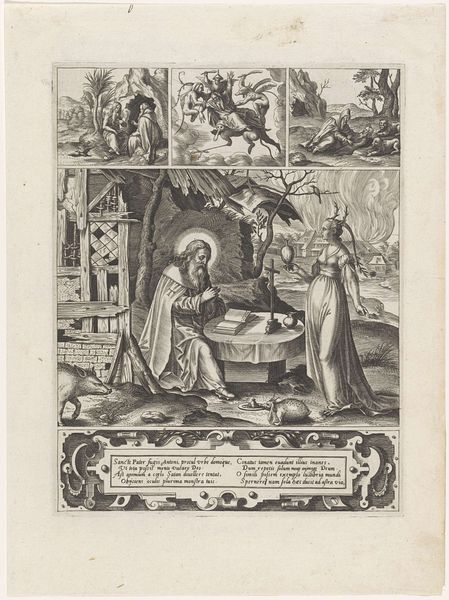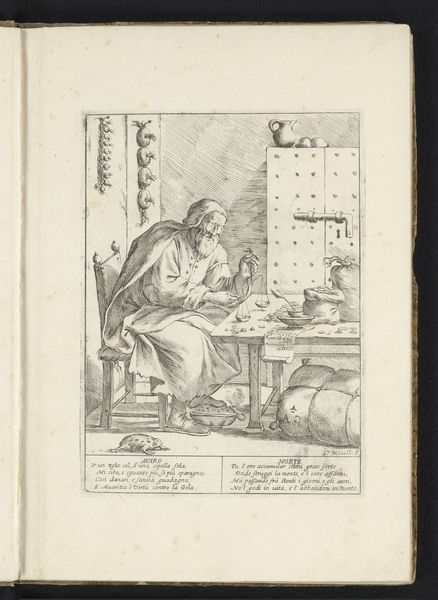
drawing, print, watercolor
#
drawing
#
water colours
#
narrative-art
# print
#
figuration
#
watercolor
#
coloured pencil
#
romanticism
#
watercolour illustration
Dimensions: sheet: 6 3/16 x 5 9/16 in. (15.7 x 14.1 cm)
Copyright: Public Domain
Editor: We're looking at William Blake's "Infant Sorrow" from Songs of Experience, created between 1794 and 1825 using watercolor and possibly colored pencil or other drawing media. The infant, fresh into the world, doesn’t seem so joyous, it looks rather like it's being reluctantly received by the mother. What's your take on this work? Curator: It's interesting you pick up on that reluctance. Blake was deeply critical of societal structures, particularly those impacting birth and childhood. Consider the Industrial Revolution brewing at the time and how it recontextualized ideas around innocence and experience. What societal critiques do you see emerging from this illustration and poem combination? Editor: The poem suggests a sort of pre-ordained misery, right? Born into sorrow. Is Blake suggesting something about social determinism? Curator: Exactly! The "dangerous world" the infant leaps into wasn’t just a physical place, but a symbolic one loaded with restrictive social norms and expectations. Think about the Enlightenment's emphasis on reason versus Romanticism’s embrace of emotion; where do you think Blake positions himself? Editor: Definitely with Romanticism. The emotionality of the image and the poem feel like a direct response against cold, hard reason. It’s like the infant is already trapped. Curator: And how does Blake's focus on the mother’s reaction influence that reading? The “Infant Sorrow” ties into broader narratives of childbirth and motherhood which are often glossed over in mainstream art. It’s a raw and unfiltered look at what many may feel. Editor: Seeing it as a challenge to the social commentary makes it that much stronger. I didn’t initially pick up on the criticism of motherhood. Thank you for opening my eyes to Blake's intersectional perspective. Curator: Art gives us an invitation to excavate what truly matters, using a radical historical consciousness to question contemporary life.
Comments
No comments
Be the first to comment and join the conversation on the ultimate creative platform.
